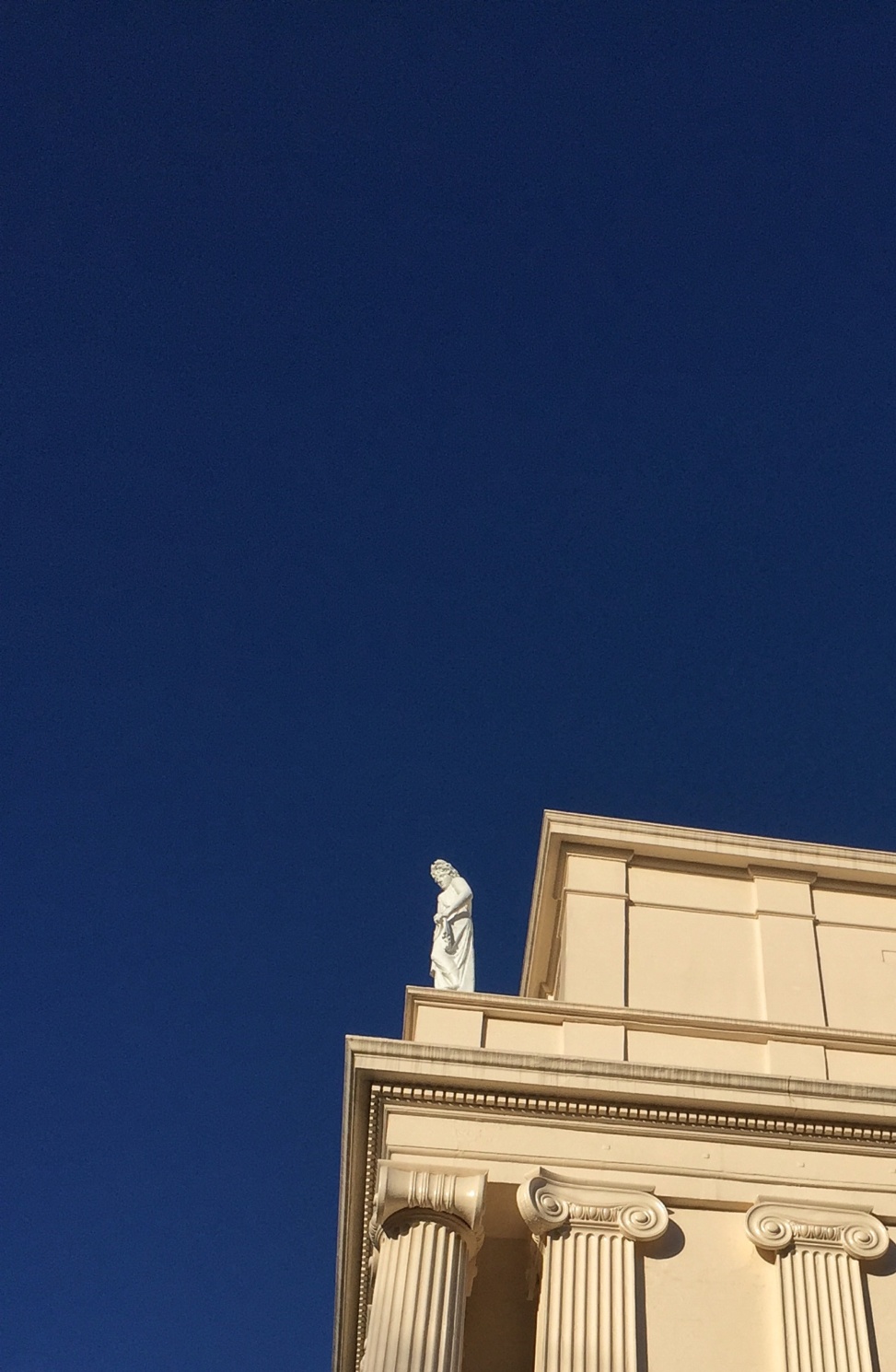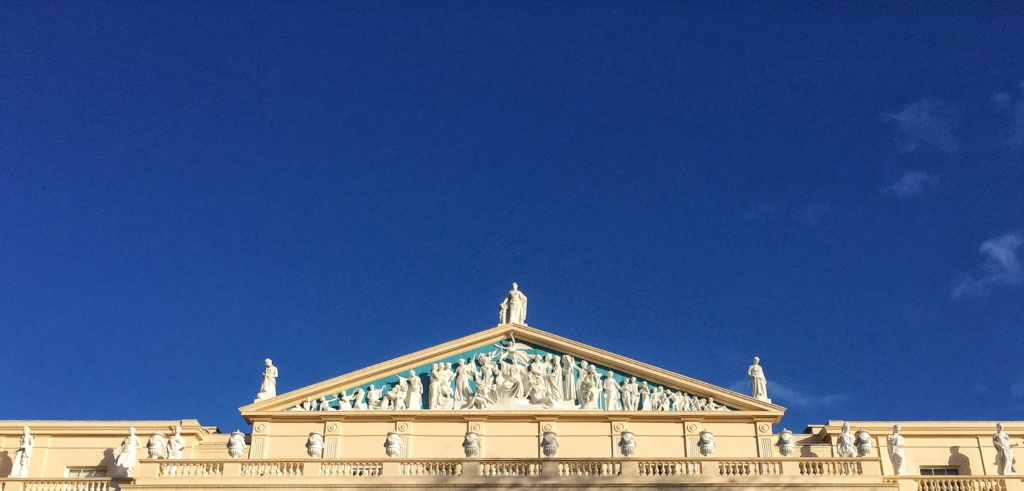Such is the cheek by jowl nature of London that you can leave a rough and ready post-war council estate built on a bomb damaged site – Regents Park Estate – and cross Albany Street and run into the back of one of the self-consciously grandest, and what may be the tartiest, buildings in all of London.
Completed in 1826 and designed by the most famous architect of the day, John Nash, who had a bit of form when it came to over the top buildings. His patron was the then Prince Regent, later King George IV, who was himself one of London’s gaudiest monuments (see below). This team were also responsible for the even more Trumpesque Royal Pavilion in Brighton and also Buckingham Palace. They planned to build a statement palace in Regents Park as part of the development of the park by the Prince who modestly changed its name from Marylebone Park to the self-titled Regents Park whilst doing it up. Cumberland Terrace’s 31 houses were intended to complement the intended grandeur of the scheme and the sale of these houses and others was expected to help pay for the palace and the park. Social housing it was not. In fact the park itself was planned to be for the exclusive use of the Prince and those wealthy enough to afford a house in it, the great unwashed were not welcome.
The Prince became a king and, as is often the case, was diverted from the task preferring to develop Buckingham Palace instead. Cumberland Terrace was left high and dry and devoid of Royal privilege. In 1835, heaven forfend, the plebs were allowed use of the park. Many of the houses have subsequently been spilt into flats but they are still populated by “them with brass” – a 3 bed flat would set you back around £7 million today – and remain defiantly and proudly camp. An obvious take on Classical Greek and Roman architecture, the Terrace is painted a sickly cream colour which gives it the impression of being a slightly too sweet wedding cake. To top off the effect a host on neo-classical statues have been arranged on top of the buildings like the bride and groom and their extended family on the afore-mentioned cake.
I can’t make my mind up whether I love or loathe these buildings but one thing is for sure; they stand out preening and perfect when the sun shines and the sky is blue. I walked past the Terrace recently and looked up to find one of the statues looking back down on me; a photo beckoned. Perhaps some day, maybe today, their prince will come?

Camp, moi? The Prince Regent and future George IV. Who would have thought this man would be titillated by neo-classical fripperies?

